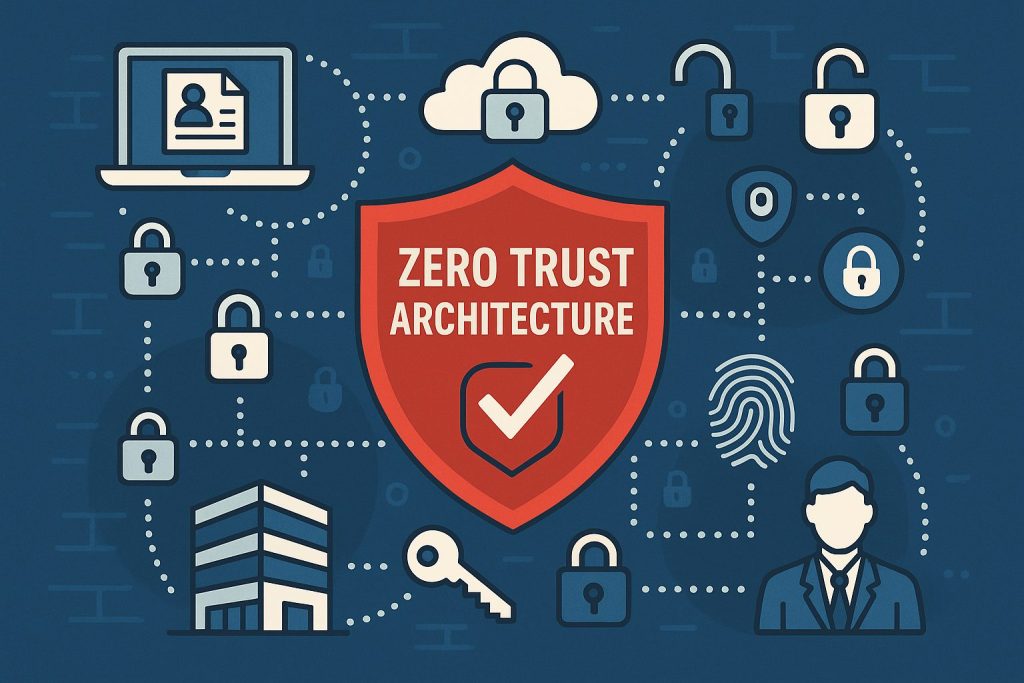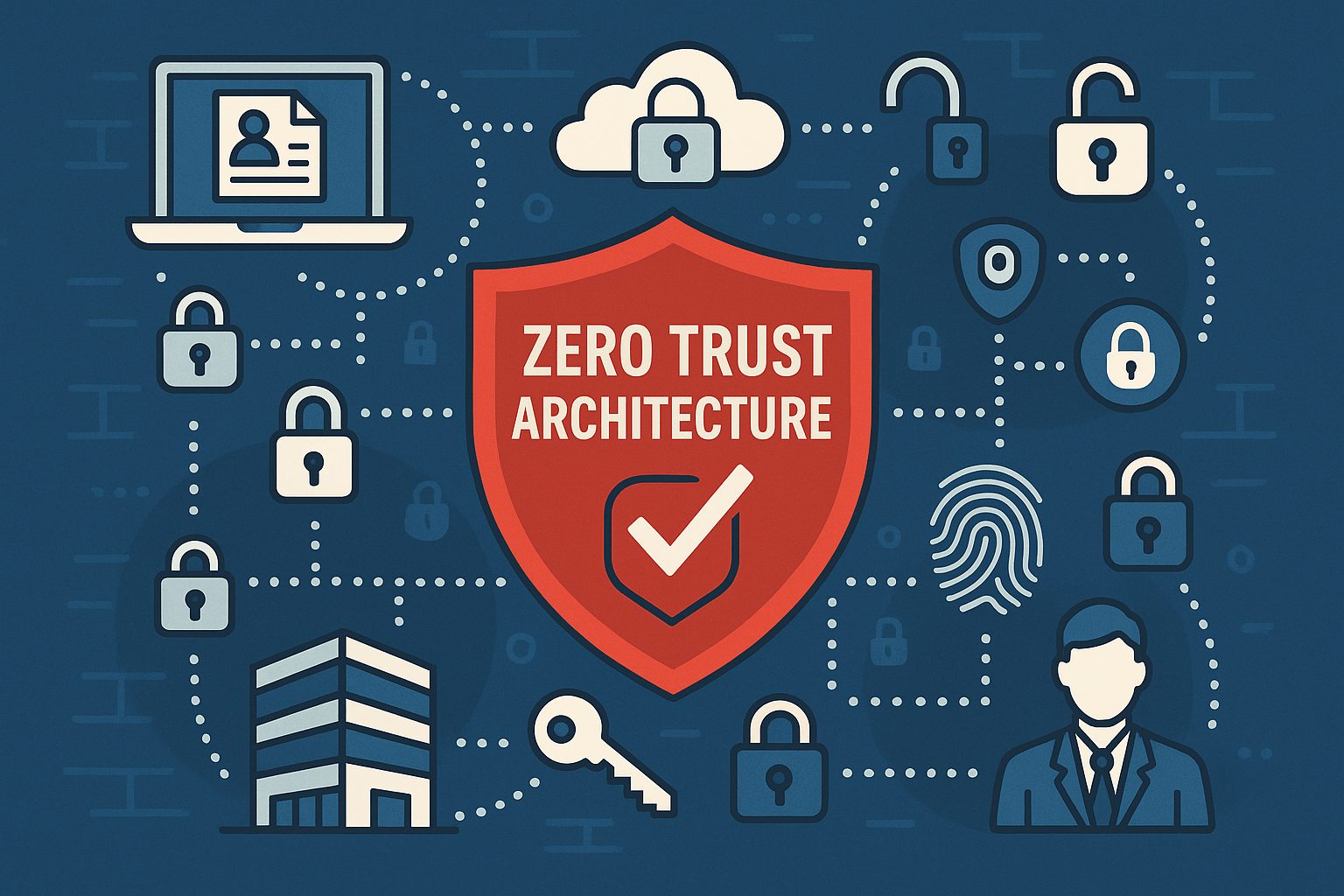
In a world where cyber threats evolve faster than security measures, traditional perimeter-based defense models are no longer enough. The concept of Zero Trust Architecture (ZTA) has emerged as a more reliable and scalable solution. Zero Trust assumes that no entity—whether inside or outside the network—should be automatically trusted. Instead, it focuses on verifying identities, enforcing strict access controls, and continuously monitoring user behavior. This article explains the fundamentals of Zero Trust Architecture, its key components, and best practices for building secure systems that can adapt to modern cybersecurity challenges.
Understanding Zero Trust Architecture Basics
Zero Trust Architecture is a security model built on the principle of “never trust, always verify.” Unlike traditional security models that rely heavily on securing a network perimeter, Zero Trust assumes that every request, user, or device could be compromised. It treats all access attempts as potentially malicious until proven otherwise. This approach significantly reduces the risk of internal and external data breaches.
At its core, Zero Trust focuses on identity verification and continuous authentication. Each user, device, and network connection must be validated before access is granted to sensitive data or systems. The model makes access decisions based on real-time context, user behavior, and risk level, providing a more dynamic layer of protection against unauthorized access.
Implementing Zero Trust involves segmenting networks and enforcing the principle of least privilege. Each user or service is given only the permissions required to perform specific tasks. This containment strategy limits the lateral movement of attackers and prevents large-scale damage in the event of a breach.
Organizations adopting Zero Trust often notice an improvement in compliance and overall security posture. By continuously monitoring and adapting access policies, businesses can protect data across multiple environments—including on-premises, cloud, and hybrid infrastructures.
Key Components of a Zero Trust Framework
A successful Zero Trust framework is built around several key components, each contributing to a layered and adaptive defense system. One of the main building blocks is identity and access management (IAM). Strong IAM ensures that users are authenticated using multi-factor authentication (MFA) and authorized to access specific resources based on predefined roles and policies.
Another essential component is network segmentation. Segmenting the network into smaller zones helps isolate sensitive assets and minimizes the spread of attacks. It allows administrators to create micro-perimeters around critical applications and data, ensuring that even if one zone is compromised, others remain safe.
Visibility and analytics also play a major role in Zero Trust Architecture. Continuous monitoring of network activity helps detect anomalies and suspicious behaviors early. Security Information and Event Management (SIEM) tools, coupled with machine learning, provide deep insights into user actions and system patterns to prevent potential breaches.
Finally, data protection and encryption are vital elements. Data should be encrypted both at rest and in transit to ensure its confidentiality and integrity. Access logs and audit trails help organizations track all activities, offering complete transparency and accountability, which is crucial for compliance with data privacy regulations.
Best Practices for Building Secure Systems
Building an effective Zero Trust-based system requires careful planning and consistent implementation. Start by assessing your current infrastructure and identifying potential vulnerabilities. Map out all user identities, devices, and applications to understand how data flows across your systems. This helps you perform an accurate risk assessment and design a security roadmap that aligns with business goals.
Implement strong authentication mechanisms such as MFA and passwordless verification. This prevents stolen credentials from being the sole gateway to your environment. Pair authentication with strict access control policies based on the principle of least privilege. Dynamic policies that adjust based on user behavior or device health can further reduce risks.
Adopting continuous monitoring and automated incident response capabilities is also crucial. Leveraging AI-driven analytics allows security teams to detect potential threats faster and respond in real time. By automating repetitive tasks and policy enforcement, you not only enhance security but also reduce the operational burden on your IT staff.
Lastly, promote a culture of cybersecurity awareness. Employees should be trained to recognize phishing attempts, social engineering tactics, and risky behaviors that could compromise system integrity. A secure system is not only built with technology—it’s strengthened by informed and vigilant users.
Q&A: Common Questions About Zero Trust Architecture
Q: Is Zero Trust Architecture difficult to implement?
A: Implementation can be complex, but starting small—by protecting the most critical assets first—makes it manageable. Gradual adoption with well-defined goals ensures long-term success.
Q: Does Zero Trust replace firewalls and VPNs?
A: Not necessarily. Zero Trust complements existing tools by enhancing authentication, segmentation, and monitoring instead of fully replacing traditional security measures.
Q: Can small businesses benefit from Zero Trust?
A: Absolutely. Even small businesses face cyber threats. Implementing basic Zero Trust principles like MFA, least privilege access, and endpoint protection can significantly improve their security posture.
Zero Trust Architecture is not a temporary trend but a transformative shift in cybersecurity. By assuming that no user or device should be inherently trusted, organizations create a proactive defense strategy that adapts to evolving threats. Building Zero Trust is a continuous journey that involves strong identity management, network segmentation, constant monitoring, and user education. As cyber risks continue to grow, adopting Zero Trust principles can help secure digital systems, protect sensitive data, and build long-term resilience in any organization.

Leave a Reply